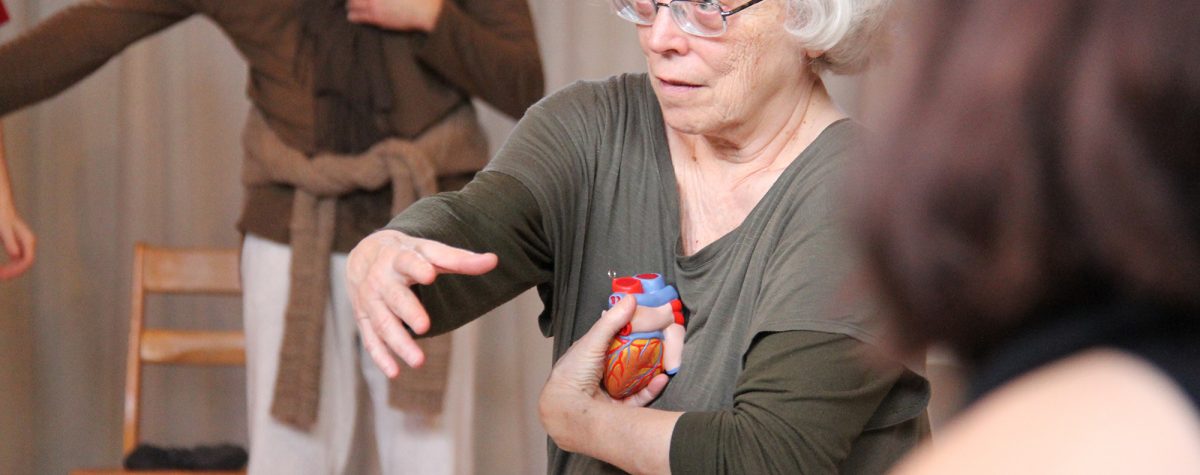
© Bonnie Bainbridge Cohen
The following is a excerpt from Bonnie Bainbridge Cohen’s book, Sensing, Feeling, and Action:
CONTACT QUARTERLY: What is the difference between the traditional way of learning/teaching anatomy and the process of embodying it?
BONNIE: Generally, when anatomy is taught as I learned it, and as I see it taught elsewhere, you’re given visual pictures of it. We have an image of it but we don’t have the kinesthesia of it within ourselves. Maybe we’ll even say, ‘Oh, I have this bone or this muscle in me,’ but it’s an intellectual concept, rather than the information coming though viscerally from the proprioceptors of that thing itself. The information is always coming in viscerally, but each person is selective in therms of what they choose to acknowledge.
The studying that we’re doing at the school [School for Body-Mind Centering®] is highly selective in terms of receiving input; we go from one system to the other – now we’re going into the senses, now we’re going to acknowledge the information from the skeleton, now from the eye, now from the muscles, now from the organs, from the glands, the brain, the blood, etc. By acknowledging each one, we see that they are channels that can be acknowledged by choice. Once they’ve been acknowledged consciously, we can utilize that information without it remaining primary.
One of the things that I think is essential with sensing, is that we reach a point where we become conscious and then we let it go, so that the sensing itself is not a motivation; that our motivation is action, based on our perception. What often happens is that once we become aware of perception, we forget about the action. The perception becomes the key thing: what am I perceiving. Instead of eating, what becomes important is: how does it taste, what is the texture. Instead of just walking it’s: how am I walking, what foot’s going in front of the other, how are the bones falling. All of that is important, but there is a time to just simply walk, or simply eat for nourishment.